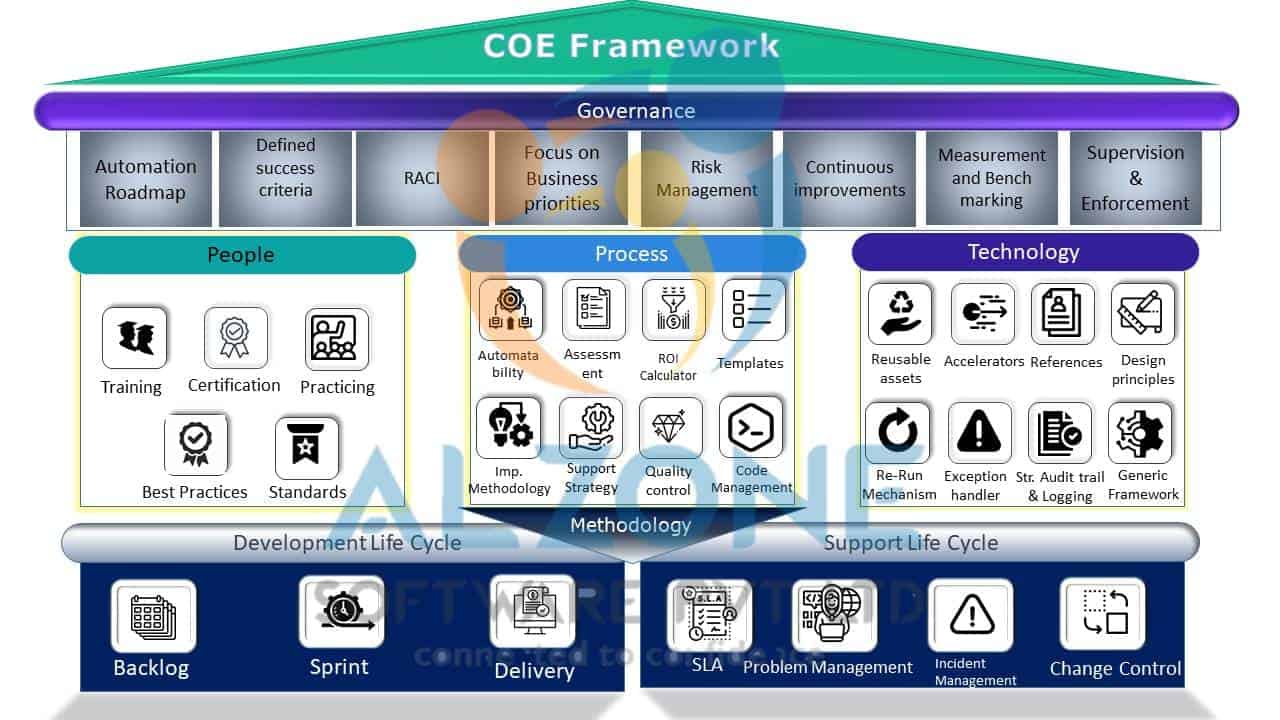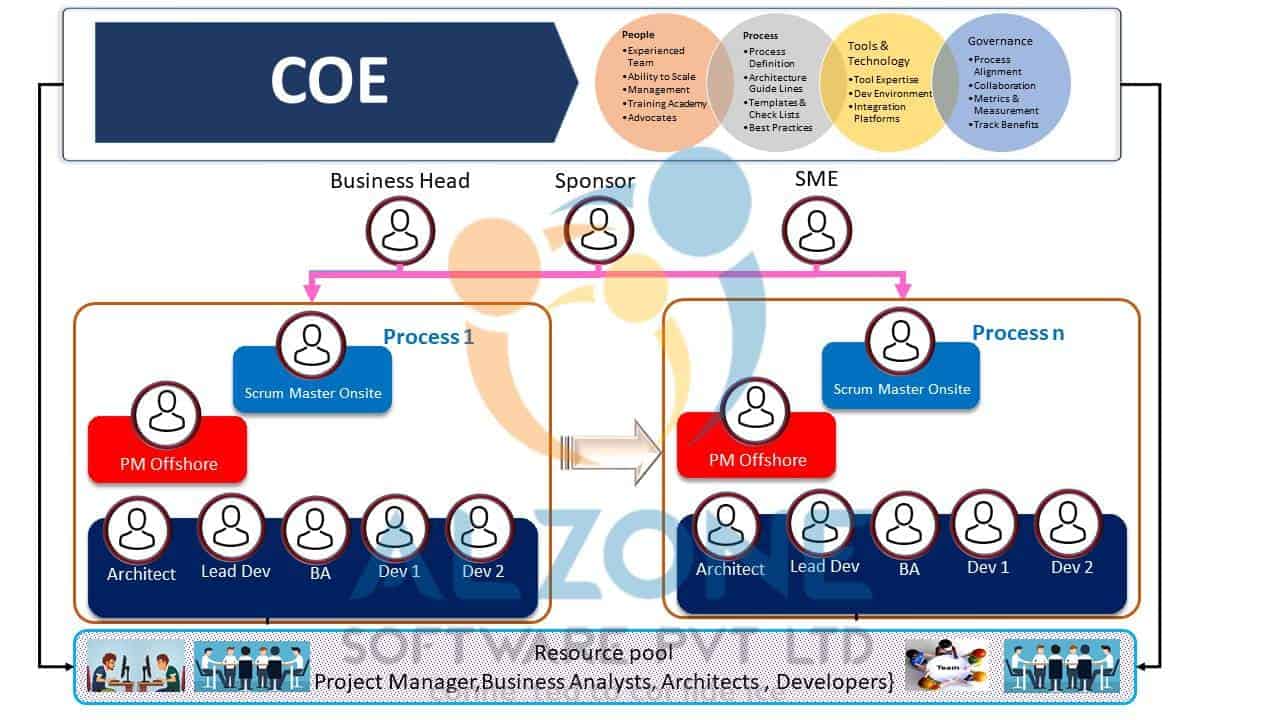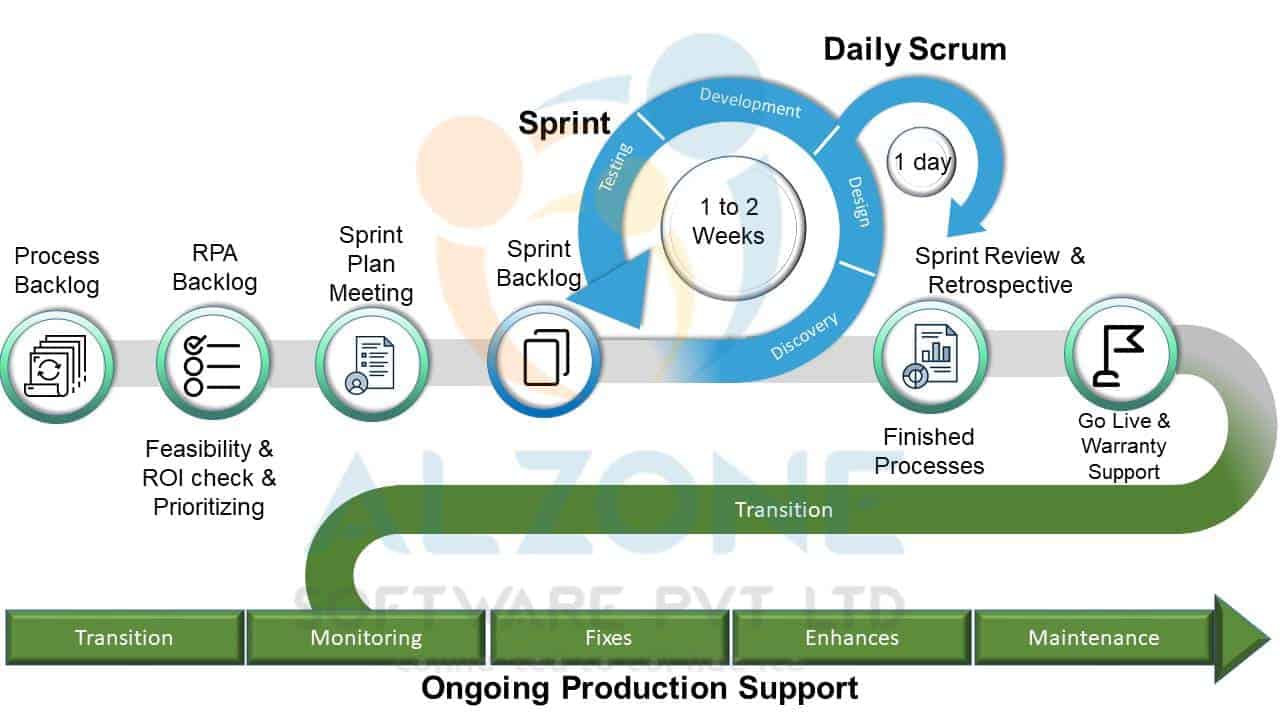center of excellence
Agile Development Life Cycle Model

At Alzone, CoE act as the central team for the control mechanism for developing, designing, and deploying Enterprise Level RPA. The RPA development will carry out based on procedures, process, best practices and coding guidelines provided by the CoE team. CoE leads to maximizing the benefits of automation, including RPA. It is very crucial to finding new automation opportunities, connecting your automation within the organization, and carrying out a long-term vision. As an experienced and award-winning RPA implementation partner of Automation Anywhere, with substantial amount of implementation experience at enterprise level, we propose an optimal implementation methodology which will give expeditious outcome to customer business with desired quality.
A standard communication mechanism will be established among all departments and functions of the customer organisation to submit the processes carried out by the team in their day-to-day work. The process details received from various department will be the primary input to Process Backlog. Each process from the process backlog will be picked up by a core team consists of Product Owner, SME’s, Business Analysists and RPA expert, to perform the ‘discovery bot’ analysis and feasibility analysis. Each process will be verified against three major factors to arrive at the feasibility measure. Those three factors are:
(a) Process examination
(b) Technical feasibility
(c) Return on Investment
Upon successful completion of feasibility check, processes which are met the automation benchmark will be moved to RPA backlog. Once this part is done, a Scrum Master (RPM) will facilitate ceremonies to compile an automation backlog, refine backlog items for clear and improved requirements, and adapt work and deliverables in defined sprints throughout the project. The sprint ceremonies are as follows

Sprint 0: A detailed discovery workshop is held to collect the automation backlog and process definition requirements in a Process Definition Document (PDD). The automation backlog will be defined with clear requirements and advanced to a build stage with quick and scalable foundations for RPA gain. The process development is broken down into sprints with sprint planning. Each sprint is determined by process functionality and delivered with a human in the loop component until the process is completed.
Sprint Refinement: During every sprint, the team consists of RPA champion, business owner and RPM/Scrum Master will re-evaluate the automation backlog and rewrite backlog items. They refine development exception criteria, escalate issues, remove roadblocks, highlight potential workarounds, motivate the team, and assign story points to the process. The business team will be included in the daily scrum and their requests and feedbacks are documented and refined at each sprint.
Sprint Retrospectives: At the end of a sprint, the Scrum Master will facilitate a sprint retrospective ceremony to adapt the work with both success and growth criteria before entering the next sprint. The process completed as part of the current sprint will be deployed into production and a warranty support team formed including a developer from the sprint team will perform the support activities for the next 6 months.
Hypercare/Warranty Support: support will be provided by the project team, where the team will monitor and provide hyper care for the processes. The team will address any technical issues arises during the period and ensure the bot is stabilized to run seamlessly.
AMC Support – Controller: After the warranty support, the bot will be published into the AMC. A Bot controller staff(support engineer) will be placed in place for smooth execution of the AMC. If any bot failure or exception occurs, an exception framework will upload the exception into a database. For every 2 minutes, from the database exception framework will raise a ticket based on the exception. This execution and development will be aligned with the AMC team.


